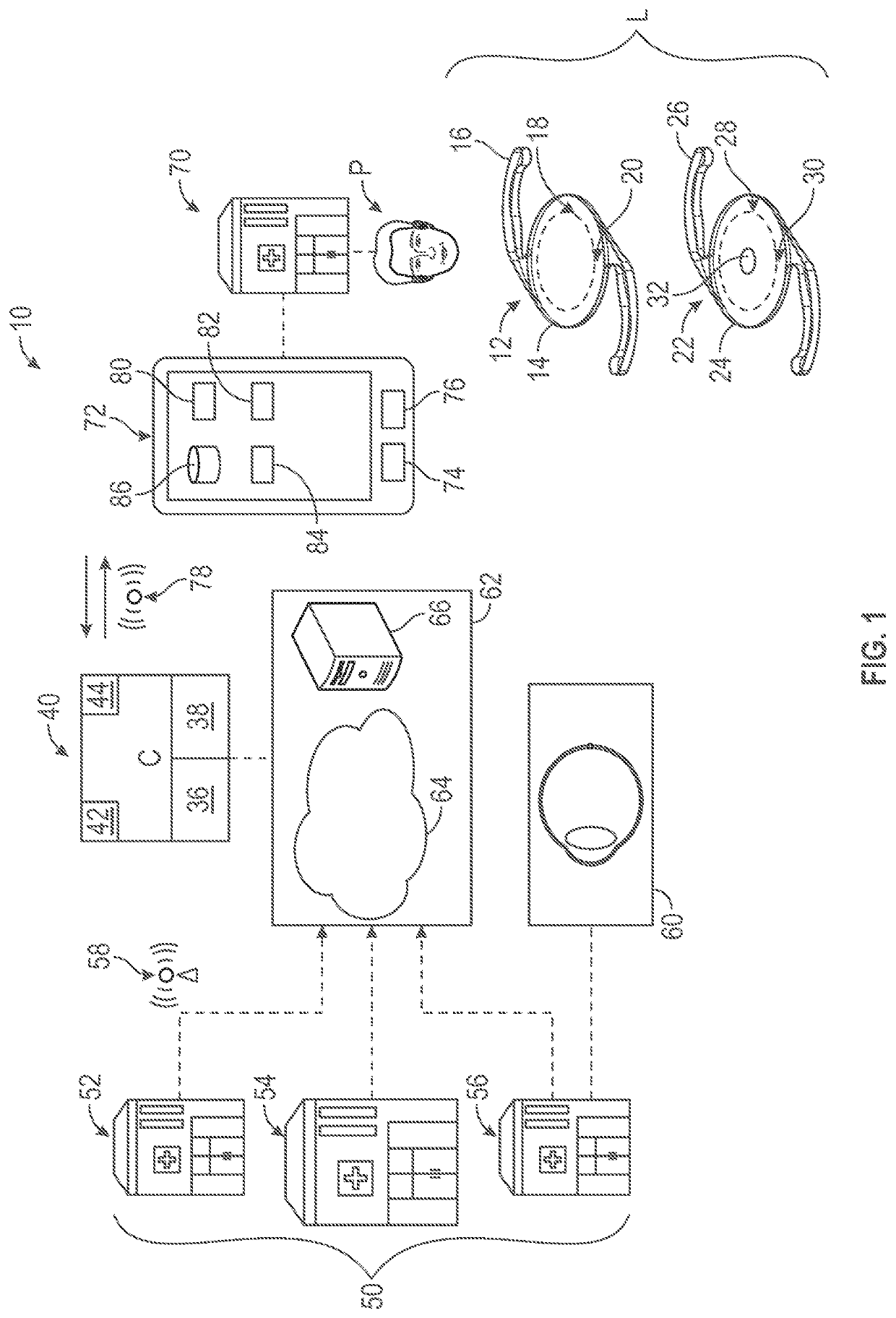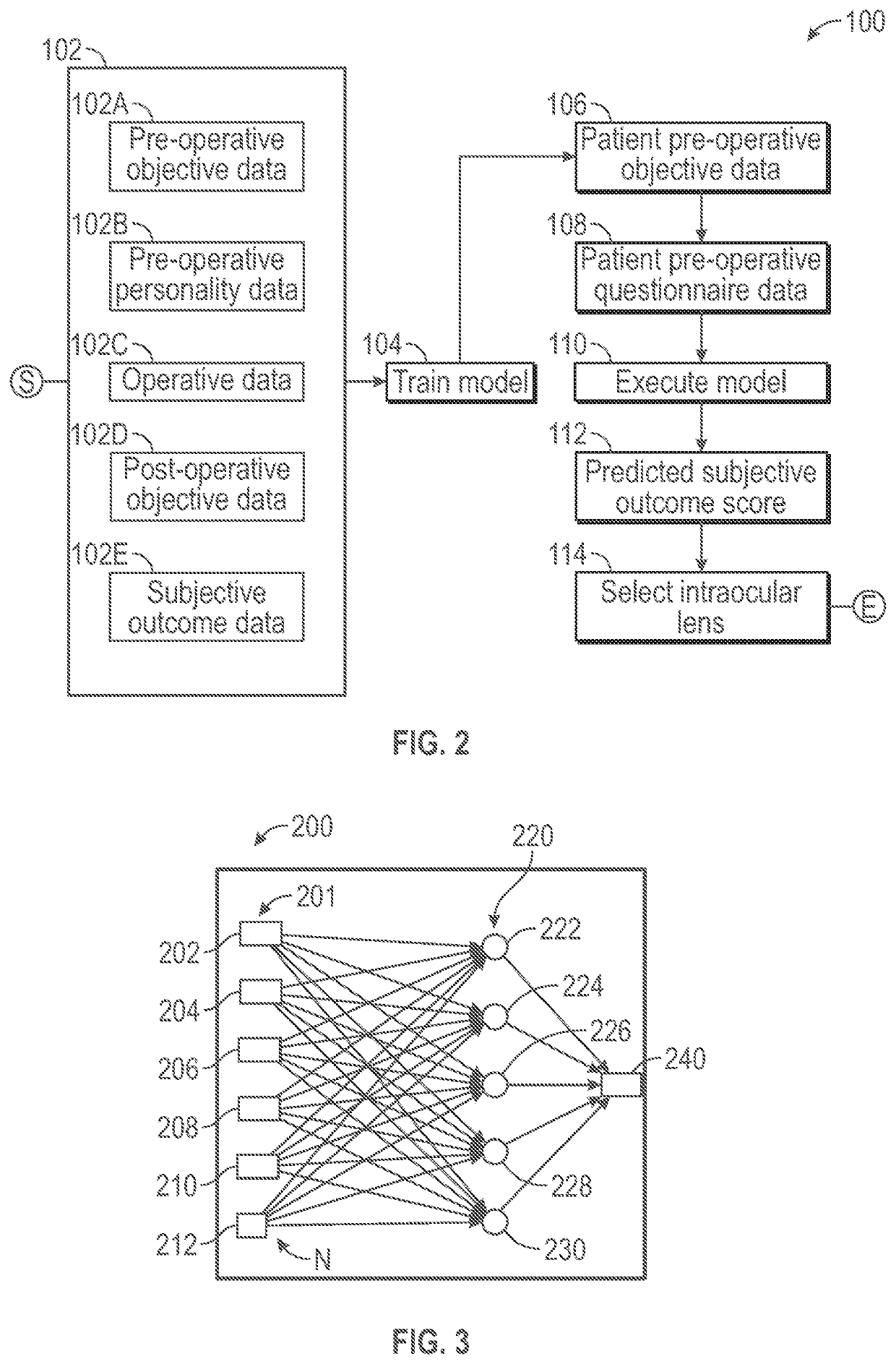Selection of intraocular lens based on a predicted subjective outcome score
a subjective outcome and intraocular lens technology, applied in the field of system and method of selecting intraocular lenses, can solve problems such as negative impact on vision quality and not always clear
- Summary
- Abstract
- Description
- Claims
- Application Information
AI Technical Summary
Benefits of technology
Problems solved by technology
Method used
Image
Examples
Embodiment Construction
[0011]Referring to the drawings, wherein like reference numbers refer to like components, FIG. 1 schematically illustrates a system 10 for selecting an intraocular lens L for implantation in a patient P. As described below, the system 10 leverages both objective and subjective data for optimizing the selection process. Examples of a first intraocular lens 12 and a second intraocular lens 22 are shown in FIG. 1. While the first intraocular lens 12 and the second intraocular lens 22 are multifocal lenses in the example shown, it is understood that any type of intraocular lens L available to those skilled in the art may be employed.
[0012]Referring to FIG. 1, the first intraocular lens 12 includes an optic zone 14 contiguous with one or more supporting structures 16. The optic zone 14 may include an apodised diffractive multifocal zone 18 and an outer distance zone 20, with the first intraocular lens 12 being configured to provide good vision over a broad range of distances. Referring t...
PUM
 Login to View More
Login to View More Abstract
Description
Claims
Application Information
 Login to View More
Login to View More - R&D
- Intellectual Property
- Life Sciences
- Materials
- Tech Scout
- Unparalleled Data Quality
- Higher Quality Content
- 60% Fewer Hallucinations
Browse by: Latest US Patents, China's latest patents, Technical Efficacy Thesaurus, Application Domain, Technology Topic, Popular Technical Reports.
© 2025 PatSnap. All rights reserved.Legal|Privacy policy|Modern Slavery Act Transparency Statement|Sitemap|About US| Contact US: help@patsnap.com


